Electroacupuncture
How to submit an article:
- Registered users can submit any published journal article that has a unique DOI (Digital Object Identifier) name or link to Research Hub.
- For example, you can paste the full DOI link:
https://doi.org/10.1109/5.771073or just the DOI name:10.1109/5.771073into the field above and click submit. - The person who is first to submit a valid article to Research Hub will forever be credited for it, and every article submission earns you +6 Research Points.
Related Topics
Published research studies are articles that present the findings of original research that has undergone a peer-review process and has been made publicly available in scholarly journals, books or other media.
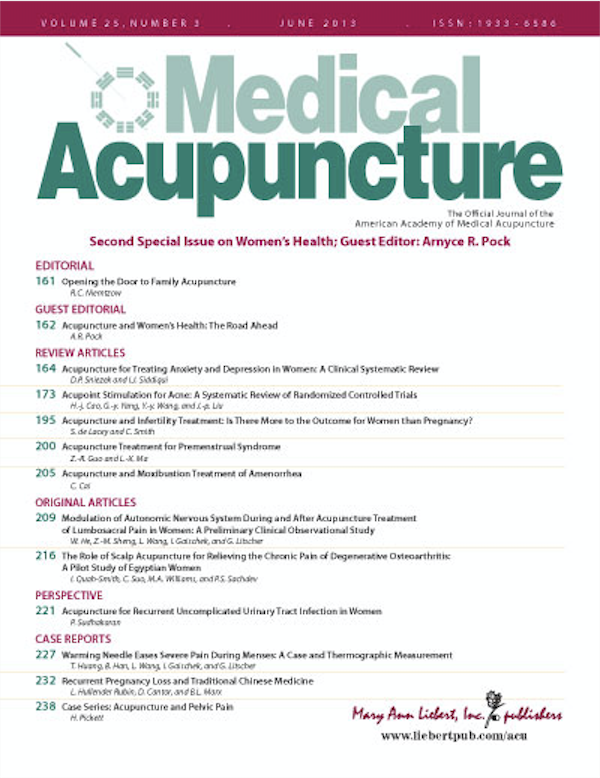
Electroacupuncture Effectiveness for Treating Idiopathic Male Infertility
2022 Dec 01 Medical Acupuncture Nurwati I, Murti B, Budihastuti UR, Prakosa T, Laqif A, Melinawati E, et al.
This case illustrated that electroacupuncture (EA) therapy for idiopathic male infertility has an effect toward improvement of the spermiogram test result, DNA Fragmentation Index (DFI), and success in achieving a pregnancy.
Case Report Male Fertility Electroacupuncture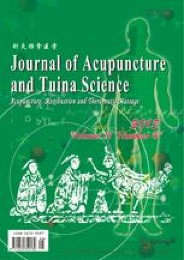
Efficacy of electroacupuncture for patients with dry eye syndromes: a randomized controlled trial
2022 Dec Journal of Acupuncture and Tuina Science Zhang D, Zhao Y, Yang Y, Liu X, Zhao Y, Shi Z, et al.
Both electroacupuncture (EA) and acupuncture alone effectively improve clinical symptoms, prolong tear film break-up time (TF-BUT), and enhance corneal sensitivity (CS) in DES patients. Additionally, both treatments significantly enhance QOL and reduce anxiety, with EA showing superior effectiveness in increasing tear secretion compared to acupuncture alone.
Randomised Controlled Trial Electroacupuncture Dry Eye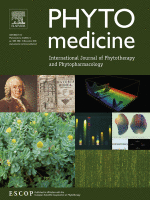
A combination of electroacupuncture and auricular acupuncture for postoperative pain after abdominal surgery for gynaecological diseases: A randomized controlled trial
2022 Sep Phytomedicine Lam WL, Wang J, Yeung WF, Cheung CW, Chan KKL, Ngan HYS, et al.
Perioperative acupuncture treatments are safe and feasible, but the efficacy of acupuncture is inconclusive.
Randomised Controlled Trial Ear Acupuncture Electroacupuncture
A bibliometric of research trends in acupuncture for spinal cord injury: Quantitative and qualitative analyses
2022 Sep 15 Frontiers in Neurology Huang Y, He K, Fang D, Ni F, Qiu B, Liang K, et al.
The findings suggest that research on acupuncture for SCI is still flourishing, and more research on electroacupuncture for promoting nerve repair and regeneration after SCI will be available in the future.
Meta-Analysis Spinal Cord Injury
A bibliometric of research trends in acupuncture for spinal cord injury: Quantitative and qualitative analyses
2022 Sep 15 Frontiers in Neurology Yi Huang, Kelin He, Dandan Fang, Fengjia Ni, Bei Qiu, Kang Liang and Ruijie Ma
The findings suggest that research on acupuncture for SCI is still flourishing, and more research on electroacupuncture for promoting nerve repair and regeneration after SCI will be available in the future.
Meta-Analysis Spinal Cord InjuryResearch insights are moderated by the Research Hub team and offer an at-a-glance overview of interesting research findings.

2022 Frontiers in Medicine
Electroacupuncture may be more effective than manual acupuncture for managing frozen shoulder, with larger effect sizes in terms of pain, function, and response rate.
Systematic Review Frozen Shoulder
Electroacupuncture for the treatment of frozen shoulder: A systematic review and meta-analysis
Heo JW, Jo JH, Lee JJ, Kang H, Choi TY, Lee MS, et al.
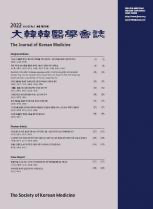
2022 Journal of Korean Medicine
Electroacupuncture treatment may be effective for treating acute gout.
Systematic Review
Systematic Review and Meta-analysis of Electoacupunture Efficacy on Acute Gout
Hwang JH, Song A, Song HS

2022 Journal of Acupuncture Research
Electroacupuncture treatment for carpal tunnel syndrome was reported to be effective and showed a significant difference from the control group.
Systematic Review Carpal Tunnel Syndrome
Electroacupuncture for Carpal Tunnel Syndrome: A Review of Randomized Controlled Trials
Park CW, Lim MJ, Lee SW, Yi YH, Song DW, Yu SG, et al.
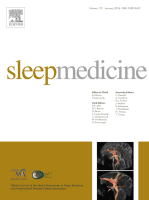
2022 Sleep Medicine
Multiple acupuncture therapies, particularly acupoints catgut embedding, auricular acupressure + manual acupuncture, and electroacupuncture + acupoint application, significantly improve insomnia symptoms.
Systematic Review
Comparative effectiveness of multiple acupuncture therapies for primary insomnia: a systematic review and network meta-analysis of randomized trial
Lu Y, Zhu H, Wang Q, Tian C, Lai H, Hou L, et al.
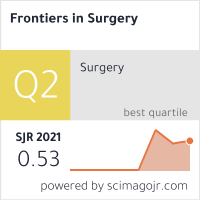
2022 Frontiers in Surgery
Acupuncture, particularly electro-acupuncture, may alleviate post-hemorrhoidectomy pain at certain stages, but overall effectiveness remains inconclusive.
Systematic Review
The Role of Acupuncture in Relieving Post-Hemorrhoidectomy Pain: A Systematic Review of Randomized Controlled Trials
Chen H, Zhang W, Sun Y, Jiao R, Liu Z
Review Articles
Review articles summarise and critically evaluate the current state of research on a specific topic or field by synthesising multiple primary research studies.

Electroacupuncture for the treatment of frozen shoulder: A systematic review and meta-analysis
2022 Aug 18 Frontiers in Medicine Heo JW, Jo JH, Lee JJ, Kang H, Choi TY, Lee MS, et al.
Systematic Review Meta-Analysis Frozen ShoulderElectroacupuncture may be more effective than manual acupuncture for managing frozen shoulder, with larger effect sizes in terms of pain, function, and response rate.

Systematic Review and Meta-analysis of Electoacupunture Efficacy on Acute Gout
2022 Jun 01 Journal of Korean Medicine Hwang JH, Song A, Song HS
Systematic Review Meta-AnalysisElectroacupuncture treatment may be effective for treating acute gout.
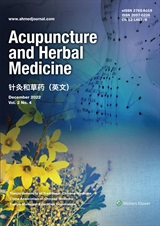
Acupuncture and moxibustion treating lower urinary tract symptoms due to benign prostatic hyperplasia: a systematic review and network meta-analysis
2022 Jun Acupuncture and Herbal Medicine Chen Z, Jiang T, Peng Y, Qiang X, Yang F, Hu H, et al.
Systematic Review Meta-Analysis Moxibustion Acupuncture Lower Urinary Tract Symptoms Urinary Tract Symptoms
Comparative effectiveness of multiple acupuncture therapies for primary insomnia: a systematic review and network meta-analysis of randomized trial
2022 May Sleep Medicine Lu Y, Zhu H, Wang Q, Tian C, Lai H, Hou L, et al.
Systematic Review Meta-AnalysisMultiple acupuncture therapies, particularly acupoints catgut embedding, auricular acupressure + manual acupuncture, and electroacupuncture + acupoint application, significantly improve insomnia symptoms.

Electroacupuncture for Carpal Tunnel Syndrome: A Review of Randomized Controlled Trials
2022 May 31 Journal of Acupuncture Research Park CW, Lim MJ, Lee SW, Yi YH, Song DW, Yu SG, et al.
Systematic Review Carpal Tunnel SyndromeElectroacupuncture treatment for carpal tunnel syndrome was reported to be effective and showed a significant difference from the control group.
Clinical Trials
Clinical trials are research studies that involve people and are conducted to evaluate the safety and efficacy of new treatments or interventions, such as drugs, medical devices, or behavioural therapies.

Efficacy of electroacupuncture for patients with dry eye syndromes: a randomized controlled trial
2022 Dec Journal of Acupuncture and Tuina Science Zhang D, Zhao Y, Yang Y, Liu X, Zhao Y, Shi Z, et al.
Both electroacupuncture (EA) and acupuncture alone effectively improve clinical symptoms, prolong tear film break-up time (TF-BUT), and enhance corneal sensitivity (CS) in DES patients. Additionally, both treatments significantly enhance QOL and reduce anxiety, with EA showing superior effectiveness in increasing tear secretion compared to acupuncture alone.
Randomised Controlled Trial Electroacupuncture Dry Eye
A combination of electroacupuncture and auricular acupuncture for postoperative pain after abdominal surgery for gynaecological diseases: A randomized controlled trial
2022 Sep Phytomedicine Lam WL, Wang J, Yeung WF, Cheung CW, Chan KKL, Ngan HYS, et al.
Perioperative acupuncture treatments are safe and feasible, but the efficacy of acupuncture is inconclusive.
Randomised Controlled Trial Ear Acupuncture Electroacupuncture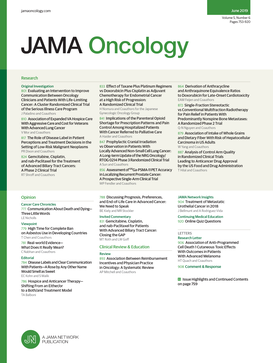
Effect of Electroacupuncture on Insomnia in Patients With Depression
2022 Jul 07 JAMA Oncology Yin X, Li W, Liang T, Lu B, Yue H, Li S, et al.
In this randomized clinical trial of electroacupuncture (EA) treatment for insomnia in patients with depression, quality of sleep improved significantly in the EA group compared with the sham acupuncture (SA) or control group at week 8 and was sustained at week 32.
Randomised Controlled Trial
Home‐based transcutaneous electrical acupoint stimulation for high‐normal blood pressure: A randomized controlled trial
2022 Jul 04 The Journal of Clinical Hypertension Wang Y, Yang JW, Liu JH, Qi YS, Tu JF, Tian ZX, et al.
The authors found a reduction in systolic blood pressure (SBP) control in the pragmatic, home-based intervention by using transcutaneous electrical acupoint stimulation (TEAS) combined with lifestyle modification in adults with high-normal BP.
Randomised Controlled Trial Electroacupuncture
Effects of Acupuncture Therapy on Drug-Resistant Fibromyalgia: An Exploratory Single-Arm Nonrandomized Trial
2022 Jun 01 Medical Acupuncture Minakawa Y, Saito S, Matsumoto Y, Oka H, Miki K, Yukioka M, et al.
The combination of conventional electroacupuncture plus electro-scalp acupuncture effectively alleviated pain, improved quality of life (QOL), and led to a reduction in pregabalin dosage requirements in patients with fibromyalgia.
Randomised Controlled TrialStudy Protocols
Published study protocols are detailed plans that outline the objectives, methodology, statistical analyses, and organisation of a research study that have been made publicly available for others to review and use as a reference.

Effectiveness and safety of warm needling therapy combined with electroacupuncture for patients with plantar heel pain syndrome
2022 May 27 Medicine Wu J, Lu J, Jiang C
We initially hypothesized that combination therapy would lead to better treatment outcomes.
Study Protocol Heel Pain
Effect of electro-acupuncture on ovarian function of women with diminished ovarian reserve: study protocol for a randomized controlled trial
2021 Dec Trials Yang L, Zhang H, Zhou L, Gao Y, Yang L, Hu Y, et al.
The results of this trial may provide high-quality evidence regarding the effectiveness of electro-acupuncture in the treatment of DOR and following outcomes of IVF-ET. This will also help patients with DOR and their physicians by offering a new treatment option.
Study Protocol Electroacupuncture
The effects of electroacupuncture and laser acupuncture therapy for patients with major trauma
2021 Dec 30 Medicine Liu CT, Hsieh TM, Shih FY, Lai WH, Hsieh CH, Wu BY, et al.
The study concluded that EA and LA interventions may impact the length of hospital stay and various inflammatory mediators in major trauma patients.
Study Protocol Electroacupuncture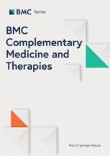
Efficacy and safety of electroacupuncture combined with Suanzaoren decoction for insomnia following stroke: study protocol for a randomized controlled trial
2021 Jul 24 BMC Complementary Medicine and Therapies Huang H, Yang S, Mei Z, Huang Y, Chen M, Mei Q, et al.
This study will contribute to assessing whether the combination of these two therapies is more beneficial for post-stroke insomnia than their independent use, and the results of this clinical trial will improve our understanding of the possible mechanisms underlying the effects of combination therapies.
Study Protocol Suan Zao Ren Tang Stroke Rehabilitation
Electroacupuncture for postoperative pain after nasal endoscopic surgery: study protocol for a pilot randomized controlled trial
2020 Feb 11 BMC Complementary Medicine and Therapies Li S, Zhang Q, Yin X, Yue H, Zhang W, Lao L, et al.
Study Protocol ElectroacupuncturePresentation Slides

Systematic Review
Electroacupuncture may be more effective than manual acupuncture for managing frozen shoulder, with larger effect sizes in terms of pain, function, and response rate.
Heo JW, Jo JH, Lee JJ, Kang H, Choi TY, Lee MS, Kim JI

Systematic Review
Electroacupuncture treatment may be effective for treating acute gout.
Hwang JH, Song A, Song HS

Systematic Review
Electroacupuncture treatment for carpal tunnel syndrome was reported to be effective and showed a significant difference from the control group.
Park CW, Lim MJ, Lee SW, Yi YH, Song DW, Yu SG, Kim MJ, Oh DY, Choi HJ, Ju AR

Systematic Review
Multiple acupuncture therapies, particularly acupoints catgut embedding, auricular acupressure + manual acupuncture, and electroacupuncture + acupoint application, significantly improve insomnia symptoms.
Lu Y, Zhu H, Wang Q, Tian C, Lai H, Hou L, Liu Y, Gao Y, Liu M, Yang F, Ni X, Lin L, Niu J, Tian J, Ge L

Systematic Review
Acupuncture, particularly electro-acupuncture, may alleviate post-hemorrhoidectomy pain at certain stages, but overall effectiveness remains inconclusive.
Chen H, Zhang W, Sun Y, Jiao R, Liu Z
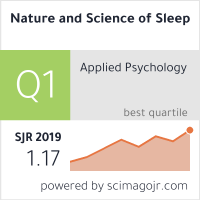
Randomised Controlled Trial
Ten sessions of electroacupuncture can improve the sleep quality of patients with insomnia without serious adverse effects.
Lee B, Kim BK, Kim HJ, Jung IC, Kim AR, Park HJ, Kwon OJ, Lee JH, Kim JH.
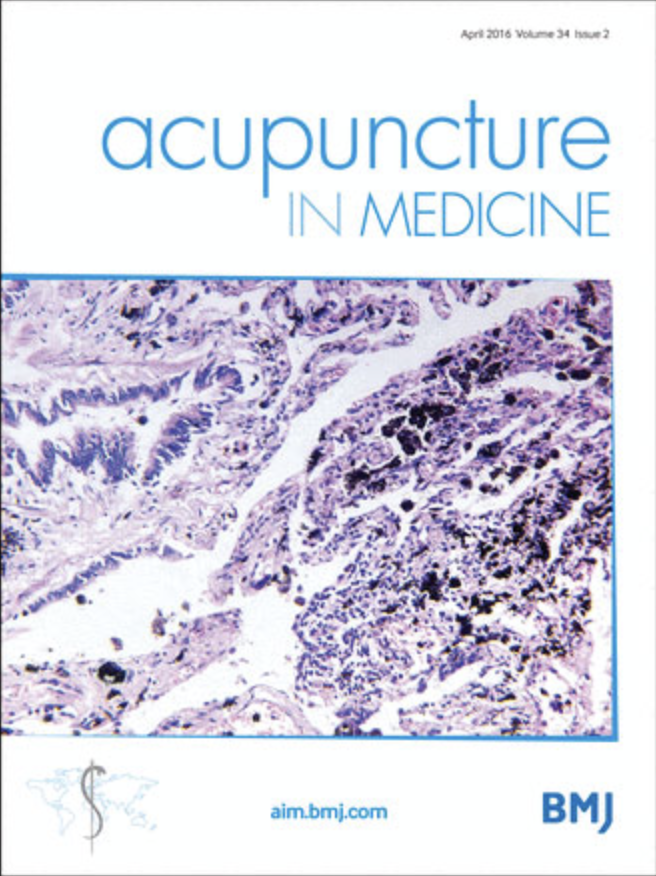
Randomised Controlled Trial
Electroacupuncture and manual acupuncture show similar effectiveness in relieving plantar heel pain syndrome with no significant difference between the two modalities.
Wang W, Liu Y, Jiao R, Liu S, Zhao J, Liu Z
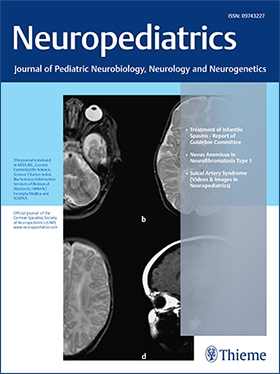
Systematic Review
Acupuncture and electroacupuncture are a therapeutic option for mild to moderate carpal tunnel syndrome with a medium level of scientific evidence, tending towards a high level, and with a medium level of recommendation.
Badia M, Santafé MM

Positive effects of acupuncture and electroacupuncture were observed in regulating gastric motility, gastric accommodation, mental status, gastrointestinal hormones, and central and autonomic functions while improving dyspeptic symptoms and quality of life.
Guo Y, Wei W, Chen JD

Systematic Review
Acupuncture has been shown to be more effective than vitamin B treatment in terms of clinical efficacy rate for chemotherapy induced peripheral neuropathy.
Hwang MS, Lee HY, Choi TY, et al.

Randomised Controlled Trial
Electroacupuncture might provide stronger impact on knee osteoarthritis than manual acupuncture, though both methods are safe and feasible treatments.
Wang TQ, Li YT, Wang LQ, Shi GX, Tu JF, Yang JW, Hou YQ, Lin LL, Sun N, Zhao JJ, Hou HK, Liu CZ
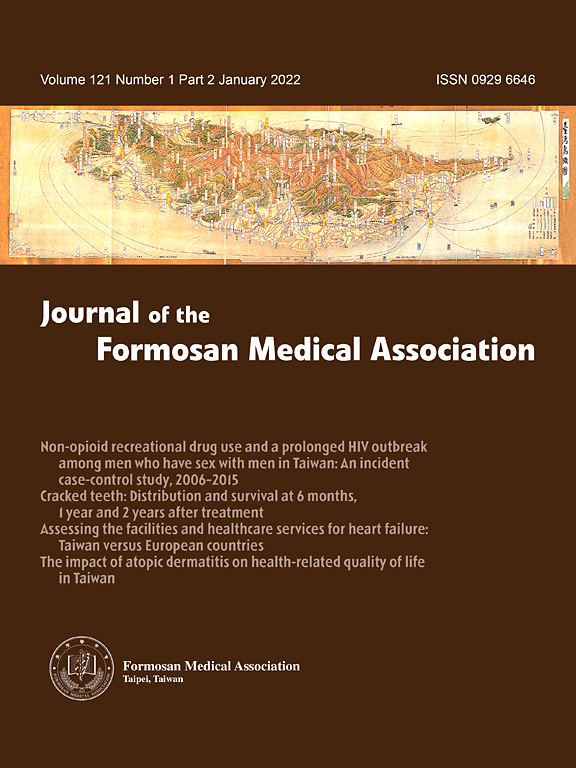
Randomised Controlled Trial
Electroacupuncture plus rehabilitation may provide earlier pain relief for patients with frozen shoulder syndrome and could be applied clinically.
Lo MY, Wu CH, Luh JJ, Wang TG, Fu LC, Lin JG, Lai JS

Systematic Review
Our analysis finds a benefit of acupuncture for IVF outcomes in women with a history of unsuccessful IVF attempt, and number of acupuncture treatments is a potential influential factor.
Xie Z, Peng Z, Yao B, Chen L, Mu Y, Cheng J, Li Q, Luo X, Yang P, Xia Y
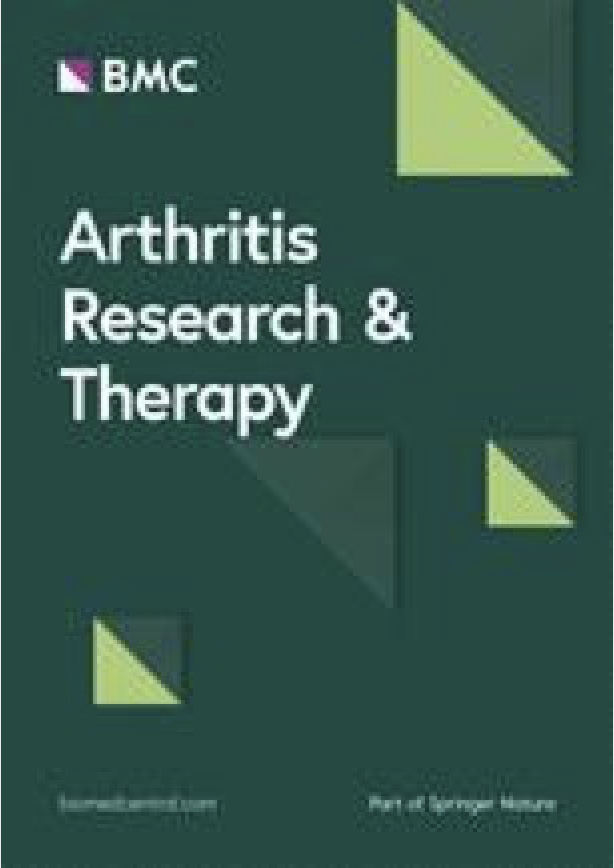
Randomised Controlled Trial
Strong electroacupuncture for at least two weeks improves chronic pain management in knee osteoarthritis patients better than weak or sham electroacupuncture.
Lv, Z., Shen, L., Zhu, B. et al.

Systematic Review
There is potential of acupuncture combined with conventional treatment for treating female chronic pelvic pain.
Sung SH, Sung ADM, Sung HK, An TEB, Kim KH, Park JK

Systematic Review
Acupuncture might have effect in decreasing the number of micturition episodes, incontinence episodes, and nocturia episodes.
Zhao Y, Zhou J, Mo Q, Wang Y, Yu J, Liu Z.

Systematic Review
Electroacupuncture can provide considerable immediate analgesia effect for primary dysmenorrhea.
Si-yi Yu, Zheng-tao Lv, Qing Zhang, Sha Yang, Xi Wu, You-ping Hu, Fang Zeng, Fan-rong Liang, Jie Yang
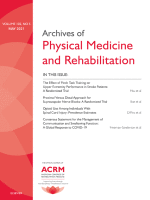
Systematic Review
Electroacupuncture combined with conventional routine care has the potential of reducing spasticity in the upper and lower limbs and improving overall and lower extremity motor function and activities of daily living for patients with spasticity, within 180 days poststroke.
Cai Y, Zhang CS, Liu S, Wen Z, Zhang AL, Guo X, Lu C, Xue CC
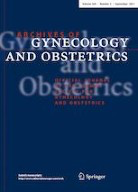
Systematic Review
Acupuncture improves the clinical pregnancy rate among women undergoing IVF and the IVF outcome results were significantly superior in the acupuncture group when acupuncture was conducted during controlled ovarian hyperstimulation.
Qian, Y., Xia, X.-R., Ochin, H., Huang, C., Gao, C., Gao, L., Cui, Y.-G., Liu, J.-Y., & Meng, Y.
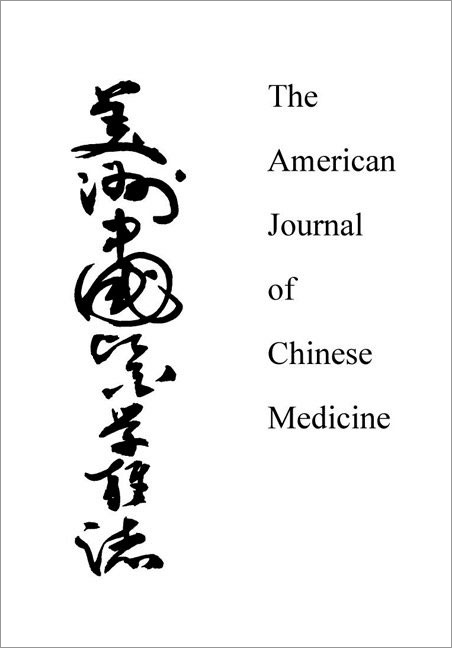
Randomised Controlled Trial
Acupuncture and electroacupuncture treatments can alleviate Carpal Tunnel Syndrome symptoms, enhance nerve repair and improve sensory and motor functions.
Ho CY, Lin HC, Lee YC, Chou LW, Kuo TW, Chang HW, Chen YS, Lo SF
Executive Summary
Write an executive summary in the form of a blog article on the topic of "Research into Chinese medicine treatment for Electroacupuncture" summarising the research below and using language that can be easily understood by patients and avoiding medical jargon using a professional and caring tone of voice.
Write an executive summary in the form of a blog article on the topic of "Researched Chinese medicine treatments for Electroacupuncture" summarising the research below in an objective and easy to understand way, and using language that can be easily understood by patients. Group the article into Chinese medicine treatments first, followed by nutrition and other treatments. Avoid using medical jargon and use a professional and caring tone of voice.
Write me a concise but easy to understand executive summary on the topic of "Chinese medicine treatments for Electroacupuncture" based on the following research that I will give you. Your summary should be 2 paragraphs long in Australian English spelling and include references to the studies.
A Systematic Review published in 2022 in the journal Frontiers in Medicine found that Electroacupuncture may be more effective than manual acupuncture for managing frozen shoulder, with larger effect sizes in terms of pain, function, and response rate. This review included thirteen studies involving 936 patients. The EA group exhibited improvements in FS pain, function, and response rates over the manual acupuncture (MA) group. As an adjunct treatment, EA improved FS pain compared to the control treatments. No adverse effects were reported. EA was found to be an efficacious method for treating FS in this review. The meta-analysis showed that EA led to a greater reduction of FS pain than MA did, although with a very low certainty of evidence. In comparison to MA, EA led to a superior degree of functional improvement in FS patients, with a very low certainty of evidence. In comparison to MA, EA enhanced the response rate of FS, again with a low certainty of evidence. Compared with WM used in isolation, EA plus WM reduced FS pain with a low certainty of evidence.
A Systematic Review published in 2022 in the journal Journal of Korean Medicine found that Electroacupuncture treatment may be effective for treating acute gout. This study aimed to examine the effectiveness of electroacupuncture (EA) in treating acute gout. A literature search was conducted using four international databases and eight randomized controlled trials (RCTs) were analyzed. Three evaluation tools were mainly used: Total Effective Rate (TER), Uric Acid (UA), and Pain Score (VAS). The results showed that EA, alone or in combination with other treatments, had a statistically significant level of improvement compared to Western medicine treatment, as indicated by the TER, VAS score, and UA level. However, the study has limitations such as geographical bias, small sample size, and high risk of bias. Further well-designed studies are needed to support these findings.
A Systematic Review published in 2022 in the journal Journal of Acupuncture Research found that Electroacupuncture treatment for carpal tunnel syndrome was reported to be effective and showed a significant difference from the control group. Although electroacupuncture treatment for carpal tunnel syndrome was reported to be effective and showed a significant difference from the control group, in some evaluation items no significant differences were observed. The quality and the number of studies included in this review was limiting, therefore an accurate evaluation of the efficacy of electroacupuncture treatment for CTS was not possible.
A Systematic Review published in 2022 in the journal Sleep Medicine found that Multiple acupuncture therapies, particularly acupoints catgut embedding, auricular acupressure + manual acupuncture, and electroacupuncture + acupoint application, significantly improve insomnia symptoms. In this research, a systematic literature search was conducted to extract data from 57 randomized controlled trials involving 4678 patients who underwent various acupuncture therapies for primary insomnia. The researchers independently screened the literature and performed a risk of bias assessment. Data from the trials were analyzed using R and Stata software, followed by an evidence assessment using the Grading of Recommendations Assessment, Development, and Evaluation system. Results showed that various acupuncture therapies, particularly acupoints catgut embedding, auricular acupressure or auricular acupuncture plus manual acupuncture, and electroacupuncture plus acupoint application, showed better effectiveness in improving insomnia, compared to the usual treatments. However, differences between the therapies were considered small or insignificant. The most common minor adverse events reported were hematoma, pain, headache, and bleeding.
A Systematic Review published in 2022 in the journal Frontiers in Surgery found that Acupuncture, particularly electro-acupuncture, may alleviate post-hemorrhoidectomy pain at certain stages, but overall effectiveness remains inconclusive. The study conducted a systematic review to assess acupuncture's effect on pain experienced post-hemorrhoidectomy. To compile the required data, the researchers closely searched through nine databases, such as PubMed and Embase, for randomized controlled trials (RCTs) home in on information concerning pain level after the surgery, the dosage of rescue analgesic medication used, patients' quality of life, and details about adverse events. Extracted data was analyzed narratively. The systematic review included four RCTs that encompassed a total of 275 patients. One observed study demonstrated that patients who underwent electro-acupuncture recorded significantly lower pain scores on the visual analog scale post-surgery and during their first defecation compared to those in the sham acupuncture group. Similar trends appeared on the verbal rating scale and Wong-Baker Faces scale but at varying time points. Another study displayed that electro-acupuncture was successful in relieving pain during defecation, up to a week following surgery, more so than local anesthetics. However, two trials that compared manual acupuncture with active medications for post-hemorrhoidectomy pain demonstrated inconsistent results.
A Randomised Controlled Trial published in 2020 in the journal Nature and Science of Sleep found that Ten sessions of electroacupuncture can improve the sleep quality of patients with insomnia without serious adverse effects. Results of the current trial provide supportive evidence that electroacupuncture can be an effective, safe, and well-tolerated non-pharmacological intervention for insomnia, using validated placebo control and validated subjective questionnaires. Further long-term studies with objective sleep measures are needed for a more definitive conclusion.
A Randomised Controlled Trial published in 2020 in the journal Acupuncture in Medicine found that Electroacupuncture and manual acupuncture show similar effectiveness in relieving plantar heel pain syndrome with no significant difference between the two modalities. In this research, participants were randomly divided into two groups to receive either electroacupuncture (EA) or manual acupuncture (MA) treatments. They underwent a course of 12 treatment sessions over a span of 4 weeks, followed by 24 weeks of follow-up. The study prioritized the assessment of treatment responders, who were identified as patients showcasing at least a 50% reduction from their initial worst pain intensity experienced during the initial steps in the morning after 4 weeks of treatment. The study encompassed 92 patients diagnosed with PHPS, enlisted between July 2018 and June 2019. A total of 78 patients (85% of the original group) successfully completed both the treatment and follow-up. The results highlight that after the 4-week treatment period, both the EA and MA groups experienced a decrease in heel pain and showed improved plantar function with no serious treatment-related adverse events. Interestingly, no significant differences were observed between the two groups in terms of pain intensity relief or in any secondary outcomes after 4 weeks of treatment and at follow-up points at 16 and 28 weeks.
A Systematic Review published in 2020 in the journal Neuropediatrics found that Acupuncture and electroacupuncture are a therapeutic option for mild to moderate carpal tunnel syndrome with a medium level of scientific evidence, tending towards a high level, and with a medium level of recommendation. The search retrieved 698 articles in total. After applying the inclusion and exclusion criteria, 21 articles were included. The level of evidence of all the articles was medium-high. The level of recommendation was medium, and the risk of bias was neutral, with a tendency towards low bias. The articles included revealed symptomatic and neurophysiological improvements, both peripheral as well as central, due to the cerebral response that occurs associated with the function of the median nerve.
A published in 2020 in the journal World Journal of Gastroenterology found that Positive effects of acupuncture and electroacupuncture were observed in regulating gastric motility, gastric accommodation, mental status, gastrointestinal hormones, and central and autonomic functions while improving dyspeptic symptoms and quality of life. In this systematic review, we pooled randomized controlled trials with mechanistic investigations of acupuncture or electroacupuncture in improving dyspeptic symptoms, and illustrated the existing results that may provide potential explanations for the therapeutic effects. The findings of included studies in this review suggest that acupuncture and electroacupuncture can improve gastric motility and accommodation, regulate gastrointestinal hormones and mental status, and alter certain central and autonomic functions in patients with functional dyspepsia. However, due to limitations in the included articles, high-quality studies with well-planned designs and multiregional investigations are necessary to provide more convincing and credible evidence.
A Systematic Review published in 2020 in the journal Medicine found that Acupuncture has been shown to be more effective than vitamin B treatment in terms of clinical efficacy rate for chemotherapy induced peripheral neuropathy. Aside from 1 study using sham-EA as a control group, all 12 studies included acupuncture versus pharmacological treatments. The results showed that acupuncture could show a superior clinical efficacy than vitamin B therapy. However, the methodological quality of the involved studies was generally low.
A Randomised Controlled Trial published in 2020 in the journal Acupuncture in Medicine found that Electroacupuncture might provide stronger impact on knee osteoarthritis than manual acupuncture, though both methods are safe and feasible treatments. The study consisted of a multicenter randomized controlled clinical trial conducted in Beijing, during which 60 participants suffering from knee osteoarthritis were split into two groups: Electroacupuncture and Manual Acupuncture. Participants in both groups were treated at the same local traditional acupuncture points, with the Electroacupuncture group using an electrical apparatus. The Manual Acupuncture group experienced a sham procedure, utilizing a working power indicator but no actual current, to keep the participants blind to the experimental conditions. Over 8 weeks, both groups received 24 treatment sessions. The successfulness of the treatments was determined by response rates, pain, stiffness, functionality, and quality of life. In the results, 53 out of 60 participants completed the study. Within these participants, the response rates were 43% for the Electroacupuncture group and 30% for the Manual Acupuncture group. Differences between group outcomes were noted but not deemed statistically significant. There were low rates of adverse effects in correspondence with the two methods, which were also evenly distributed across the two groups.
A Randomised Controlled Trial published in 2020 in the journal Journal of the Formosan Medical Association found that Electroacupuncture plus rehabilitation may provide earlier pain relief for patients with frozen shoulder syndrome and could be applied clinically. This clinical trial investigated the short and medium-term effects of true and sham electroacupuncture on people with frozen shoulder syndrome (FSS). The study included 21 participants who were randomly divided into two groups: a true electroacupuncture group and a sham electroacupuncture group. Both groups received 18 sessions of treatment over 6-9 weeks and were then followed up for 1, 3, and 6 months. The results showed that both groups had lasting effects at 1, 3, and 6 months, but the true electroacupuncture group showed earlier pain relief and more improvement in shoulder mobility. Overall, the study suggests that electroacupuncture plus rehabilitation may provide early pain relief for FSS patients and may have clinical applications.
A Systematic Review published in 2019 in the journal BMC Complementary Medicine and Therapies found that Our analysis finds a benefit of acupuncture for IVF outcomes in women with a history of unsuccessful IVF attempt, and number of acupuncture treatments is a potential influential factor. Our analysis finds a benefit of acupuncture for IVF outcomes among women with a history of unsuccessful IVF attempt, and number of acupuncture treatments is a potential influential factor. As repeated IVF cycle is possibly a proxy for implantation failure, which associated with poor prognoses (i.e. increasing age, longer history of infertility, elevated Peak FSH). In the future, analyses of pooled, patient-level data will be useful to find the true role of these parameters on the efficacy of acupuncture on IVF outcomes.
A Randomised Controlled Trial published in 2019 in the journal Arthritis Research & Therapy found that Strong electroacupuncture for at least two weeks improves chronic pain management in knee osteoarthritis patients better than weak or sham electroacupuncture. In this investigation, a multicenter, three-arm parallel, single-blind randomized controlled trial was conducted in which 301 patients suffering from knee osteoarthritis were randomly divided into three groups based on the electroacupuncture current intensity: strong, weak, and sham. Treatments were carried out in five sessions per week over a two-week period. The impact of these treatments was primarily measured by assessing the Visual Analog Scale, conditioned pain modulation function, and the Western Ontario and McMaster Universities Osteoarthritis Index. After a week of electroacupuncture, a clinically significant improvement was observed in Visual Analog Scale scores and Western Ontario and McMaster Universities Osteoarthritis Index scores, but not in conditioned pain modulation function. However, after two weeks of treatment, improvements were seen in all three primary outcomes when compared to baseline. In terms of enhancing conditioned pain modulation function specifically, both weak and strong electroacupuncture outperformed the sham option, with strong electroacupuncture showing superiority to weak, and resulted in better pain management.
A Systematic Review published in 2018 in the journal Evidence-Based Complementary and Alternative Medicine found that There is potential of acupuncture combined with conventional treatment for treating female chronic pelvic pain. This review suggests the potential of acupuncture combined with conventional treatment compared to conventional treatment alone for treating female chronic pelvic pain. However, there is insufficient evidence to conclude that acupuncture can be recommended as a complementary and alternative (CAM) treatment for women with CPP. To draw a firm conclusion, future studies should require not only lager, more rigorously designed RCTs but also research on different acupuncture treatment types.
A Systematic Review published in 2018 in the journal Medicine found that Acupuncture might have effect in decreasing the number of micturition episodes, incontinence episodes, and nocturia episodes. Overactive bladder is stated as the occurrence of urinary urgency which will cause negative impacts and decrease patients’ health-related quality of life. The aim of this systematic review is to assess the efficiency and safety of acupuncture for adults with overactive bladder (OAB) comparing with sham-acupuncture, drugs, and acupuncture plus drugs. Acupuncture might have effect in decreasing the number of micturition episodes, incontinence episodes, and nocturia episodes. However, the evidence is insufficient to show the effect using acupuncture alone or the additional effect to drugs in treating OAB.
A Systematic Review published in 2017 in the journal Evidence-Based Complementary and Alternative Medicine found that Electroacupuncture can provide considerable immediate analgesia effect for primary dysmenorrhea. Our findings indicated that EA at SP6 can provide considerable immediate analgesic effect for primary dysmenorrhea and its immediate effect of pain relieving seems to be superior to control interventions. Moreover, there was greater prevalence of curative rate in the EA treatment group compared with the pharmacological treatments after a course of treatment. These results appear to be encouraging, but it should be considered at the same time that they are based on relatively low number of trials and relatively poor methodological quality of the primary studies. Hence, future research should be designed strictly and comprehensively to provide unbiased evidence about the efficacy of EA in the treatment of PD.
A Systematic Review published in 2017 in the journal Archives of Physical Medicine and Rehabilitation found that Electroacupuncture combined with conventional routine care has the potential of reducing spasticity in the upper and lower limbs and improving overall and lower extremity motor function and activities of daily living for patients with spasticity, within 180 days poststroke. EA combined with conventional routine care has the potential of reducing spasticity in the upper and lower limbs and improving overall and lower extremity motor function and activities of daily living for patients with spasticity, within 180 days poststroke. Further studies of high methodological and reporting quality are needed to confirm the effects and safety of EA, and to explore the adequate and optimal protocol of EA for poststroke spasticity, incorporating a group of comprehensive outcome measures in different populations.
A Systematic Review published in 2016 in the journal Archives of Gynecology and Obstetrics found that Acupuncture improves the clinical pregnancy rate among women undergoing IVF and the IVF outcome results were significantly superior in the acupuncture group when acupuncture was conducted during controlled ovarian hyperstimulation. When the studies were restricted to Asian or non-Asian area patients, compared with traditional acupuncture and other methods, electrical acupuncture yielded better IVF outcomes. Optimal positive effects could be expected using acupuncture in IVF during controlled ovarian hyperstimulation, especially in Asian area. However, as a limitation of this review, most of the included studies did not mention the number of embryos transferred.
A Randomised Controlled Trial published in 2014 in the journal The American Journal of Chinese Medicine found that Acupuncture and electroacupuncture treatments can alleviate Carpal Tunnel Syndrome symptoms, enhance nerve repair and improve sensory and motor functions. The conducted research involved treating 26 confirmed Carpal Tunnel Syndrome patients using acupuncture and electroacupuncture. These patients were divided into two treatment groups based on a neurophysiological grading scale. Fifteen patients were treated with acupuncture and eleven with electroacupuncture, which was administered on both upper limbs at acupoints PC-7 (Daling) and PC-6 (Neiguan) along the pericardial meridian. Each patient underwent a total of 24 treatment sessions lasting 15 minutes each, spread over a period of six weeks. Evaluation of the results saw improvements in symptom severity after the electroacupuncture treatments. This was based on the short clinical questionnaire by Lo and Chiang, an evaluation method used to gauge symptom severity. Post acupuncture treatment, the patients reported a significant increase in grip strength, particularly on the side more affected by Carpal Tunnel Syndrome. The electrophysiology evaluation also saw a significant improvement in the motor amplitude of the palm-wrist segment. There was also a notable decrease in Tinel's sign on the side more affected by symptoms. This points to both acupuncture and electroacupuncture having clear therapeutic benefits for Carpal Tunnel Syndrome patients.
Moderation Tools
Topic
Sign In
Users not signed in are limited to viewing the 5 most recent items of content.
Electroacupuncture shows promising results to treat Lower Urinary tract symptoms caused by BPH. However, more quality evidence needs to be yielded to further support its effectiveness. —Adrian Y 17 Feb 2023